Interview of Olivier Neyrolles, a French microbiologist and researcher. His research focuses on host-pathogen relationships in tuberculosis. He is a researcher at the Centre National de la Recherche Scientifique (CNRS) and heads IPBS-Toulouse, a joint research unit of the CNRS and the University of Toulouse-III-Paul-Sabatier. In 2021, he received the CNRS silver medal.
1. As a researcher, what do you see as the main obstacles and challenges to eradicating tuberculosis by 2030? To that end, what would be the benefits of developing new medical countermeasures?
In my view, there are many obstacles, but historically there has been a lack of political will – particularly from developed countries such as the United States and the countries of the European Union where tuberculosis is no longer a major public health problem – that is the most important. However, we can see that the situation is changing and tuberculosis is making a comeback as a result of globalisation, migrations, climate change, economic crises and the impoverishment of certain parts of the developed world.
One marker of this lack of political will is the UN High-level meeting on tuberculosis in September 2018: it was the first, but it has also been the only one. Before, there had never been a gathering of presidents and governments dedicated to tuberculosis. Of course, it’s great that they held the meeting and made commitments, but the fact that we had to wait until 2018 speaks volumes about the lack of political will.
Then there are the obstacles in terms of tools for eradicating the disease, particularly diagnostic tools. It is estimated that we may be missing 30 to 40% of tuberculosis cases, so we need more reliable, simpler diagnoses that are also closer to people. New drugs are obviously needed, and for eradication, today there is no better vaccine than the BCG. We can control a disease with drugs, with diagnostic tools, with improved patient care, etc., but to eradicate an infectious disease such as tuberculosis – an effective vaccine is essential. There are several areas of research today, all of which are equally important: research into new diagnostic and therapeutic tools and, in particular, alternative therapies. But for eradication, we need a new vaccine that is more effective than the BCG, or one that can be used in addition to the BCG.
2. Why is it so important to invest in TB R&D now? Are there any promising developments in the pipeline for new and more efficient TB diagnostics, treatments, and vaccines? How could these future tools better support the fight toward eradication of TB?
We need to invest now because we didn’t invest enough before! We really need to hurry up and invest, because the projections for 2015 to 2030 are around thirty million deaths – with economic costs of $1,000 billion worldwide. This is not just the cost of treatment, but also the economic losses due to people no longer being able to work. There are countries in Africa and Asia where the cost of tuberculosis represents 1 to 2% of GDP. We need to invest now, more than ever.
There has been enormous progress in diagnostic tests, with tests that are much simpler, more reliable, and less invasive than current tests (i.e sputum microscopy analyses, PCR-based molecular tests, X-ray examination of the lungs, tests based on body fluids, etc.). One of our teams at the lab is working on tests based on exhaled air. It’s a bit like a breathalyser, where you blow into a tube and depending on the colour change, you get a reliable diagnosis. One of my colleagues and his team are in the process of implementing and testing it in countries where there is a high incidence of the disease. The initial results are extremely encouraging, with very high levels of reliability.
New drugs are also being developed, with new molecules recently brought to market. However, the problem is that when a new antibiotic is marketed, resistance develops in its wake. There are also new treatment protocols, which have not yet been approved by the WHO, but which would make it possible to move towards shorter treatment protocols. The simplest form of tuberculosis requires 6 months of treatment, including a 2-month attack phase and 4 months of consolidation, which is limiting. With these new protocols, we could perhaps have a treatment period of 4 months or less, which would be significant progress.
We also have candidate vaccines being tested in phase 3 in humans, some of which are very promising. There is a vaccine developed by GSK and Gates that has shown 50% efficacy when given in addition to the BCG. There are also live vaccines currently being tested in phase 3, which have produced very good results in preclinical animal studies and in phases 1 and 2.
3. At the present, what are the main challenges for the deployment of new countermeasures? After seeing the speed at which COVID-19 tests, vaccines and treatments were developed, what do you consider to be the main obstacle to replicating this success for more efficient tools against TB?
As described in the previous question, there really are grounds for optimism, but investment is still too low. Compared with COVID, in 2 years $10 billion was invested in vaccine research. For tuberculosis in 2019, over one year, the figure is 100 million: i.e. 100 times less. When COVID arrived, developed countries were badly hit, there was widespread panic, a pandemic was declared, and then suddenly – there was money. In the case of tuberculosis, we don’t really know where the money is. In fact, a lot more money is needed, not just for research, but also for implementation and for access to care for certain populations who have difficulty accessing it. We saw clearly with COVID – which completely disrupted health systems – that in countries which are not equipped, tuberculosis patients were completely forgotten. That being said, even if tuberculosis had the same amount of funding comparable to that devoted to COVID research, tuberculosis research would take time.
In addition to the obvious financial obstacles, we also face obstacles in terms of knowledge about the nature of the disease. COVID is a disease that is, shall we say, “simple”: in other words, it’s a bit like the flu: if you develop antibodies against it, you’re protected. When you’re infected once, you’re more or less protected against further infection (if we leave variants aside). So, to put it simply, you take a vaccine against the identified antigen, which produces antibodies, and you are protected.
Tuberculosis is of a completely different nature: just because you’re infected once doesn’t mean you can’t be reinfected again. Secondly, protection by antibodies is not at all the main form of protection against tuberculosis. In this case, immunity is much more complicated, and is based on cells and lymphocytes, known as cellular immunity. From this point of view, tuberculosis is similar to AIDS, which is why we haven’t managed to find a vaccine for AIDS so far. We don’t know how to develop a vaccine that stimulates cellular immunity because we don’t know which cellular immunity to stimulate. At the moment, there is a whole field of research trying to identify, at the level of tissue lesions, the populations of immune cells that protect. We’re still in the early stages of understanding protective immunity against tuberculosis, and these are extremely expensive approaches.
What is encouraging today is that we have vaccines in all the clinical phases. We have candidate vaccines in the preclinical phase, we are beginning to understand the immunity that protects against tuberculosis, and with this knowledge we will be able to develop new vaccines. But all this work is long and uncertain: this continuum must not be allowed to dry up. On the contrary, we need to amplify this movement with increased political will, followed by appropriate levels of funding.
Finally, one last aspect that is worth mentioning: we need to insist on fundamental research and its funding. Despite recent positive developments, there is still a very big difference between the United States and the EU on the subject matter. For example, in the latest Horizon Europe call there were a few lines on basic research, but it’s still not enough. In comparison, the Americans have tens of millions of dollars to spend on immunology, in other words on “trying to understand what’s going on”. In particular, thanks to basic research, American researchers have just identified sub-sub-populations of immune cells, the existence of which would never have been suspected 2 years ago, and which are probably crucial in protection against tuberculosis – at least in primates. Europeans would never have been able to make such a discovery with the resources currently at their disposal.



